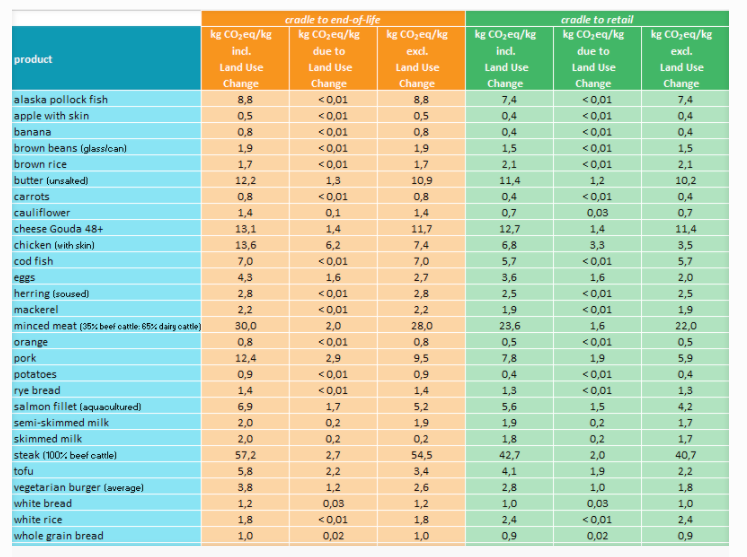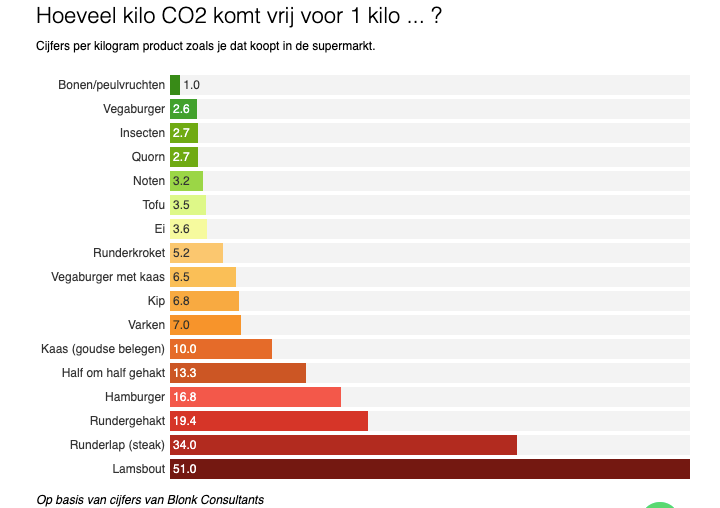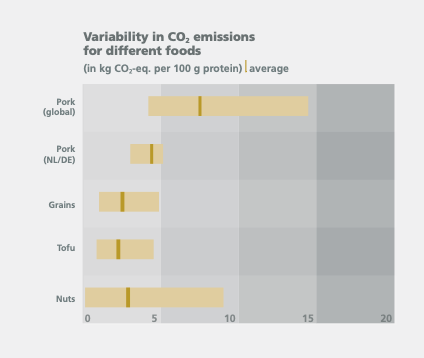According to Vion, the CO2 footprint of Dutch "pork", at 5 kg CO2 (equivalent) per kg, is much lower than the 7 kg CO2 per kg for tofu. In its annual Corporate Social Responsibility (CSR) report, Vion refers to a RVO report from 2014. This report indeed concluded that the emission of greenhouse gases from Dutch pork (in 2012) was 5 kg CO2 per kg, considerably less than pig meat from many other countries. However, the comparison with tofu is not valid, and different calculation methods are compared.
Blonk Consultants, which is also quoted in the same RVO report and on which Milieu Centraal bases its figures, calculates 12.4 kg CO2 per kg of pork consumed in the Netherlands. This includes land use (such as deforestation for feed), in 2019. The lowest figure of 5.9 kg CO2 per kg at Blonk relates to pork without including land use and preparation.
If we compare tofu in the same table by Blonk (see below), tofu has an emission of 5.8 kg CO2 per kg. Excluding land use and preparation, tofu only has an emission of 2.2 kg kg CO2 per kg.

In short, if we compare tofu with pork in the same circumstances then pork is at least twice as bad for the climate as tofu.
At Milieu Centraal you can also clearly see that all animal products have a higher CO2 emission than all vegetable products; and pork again twice as much as tofu.

Furthermore, the graph below that is used in Vion's CSR report shows the emissions per 100 grams of protein (i.e. not per kilo of product). A kilo of pork contains about 21 grams of protein, and a similar amount of tofu contains 12 grams of protein, so it makes sense that pork seems relatively OK.

Pig feed contains 9-19% soy products. Dutch pig farming uses 494,000 tons of soy (products) per year. Most of this comes from South America (i.e. the Amazon). More than 90% of the soybeans grown in South America are cultivated purely as animal feed. In the end only about 3 to 4% of the soy grown in South America is used for products such as tofu. The soy for tofu and other soy products you buy in the Netherlands does not come from South America, but from Europe or Canada.
Again, never trust Vion's statements!